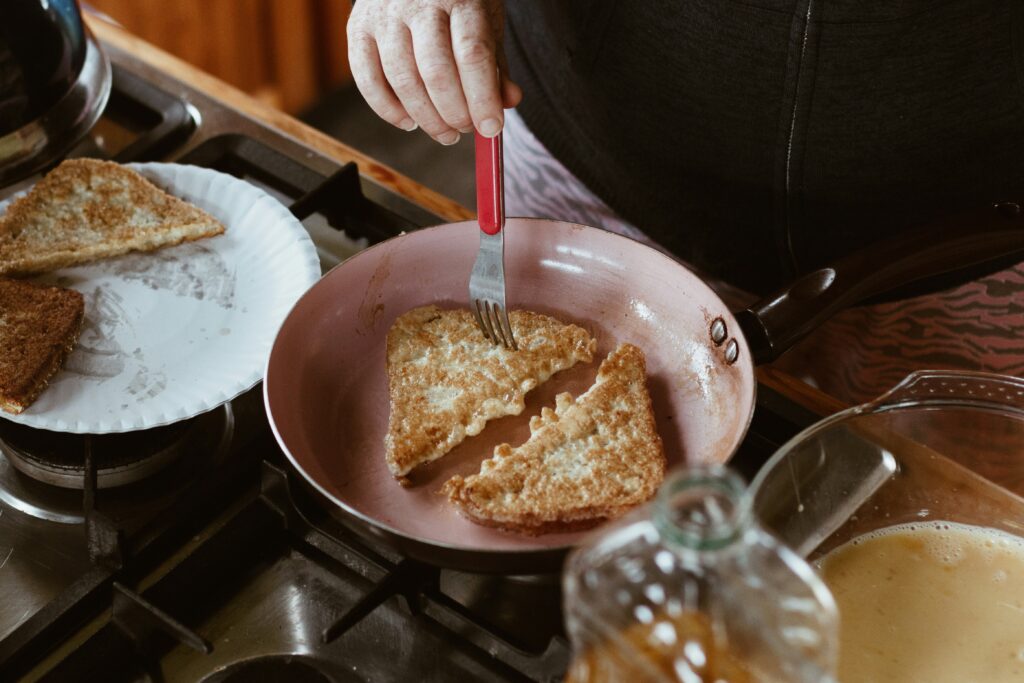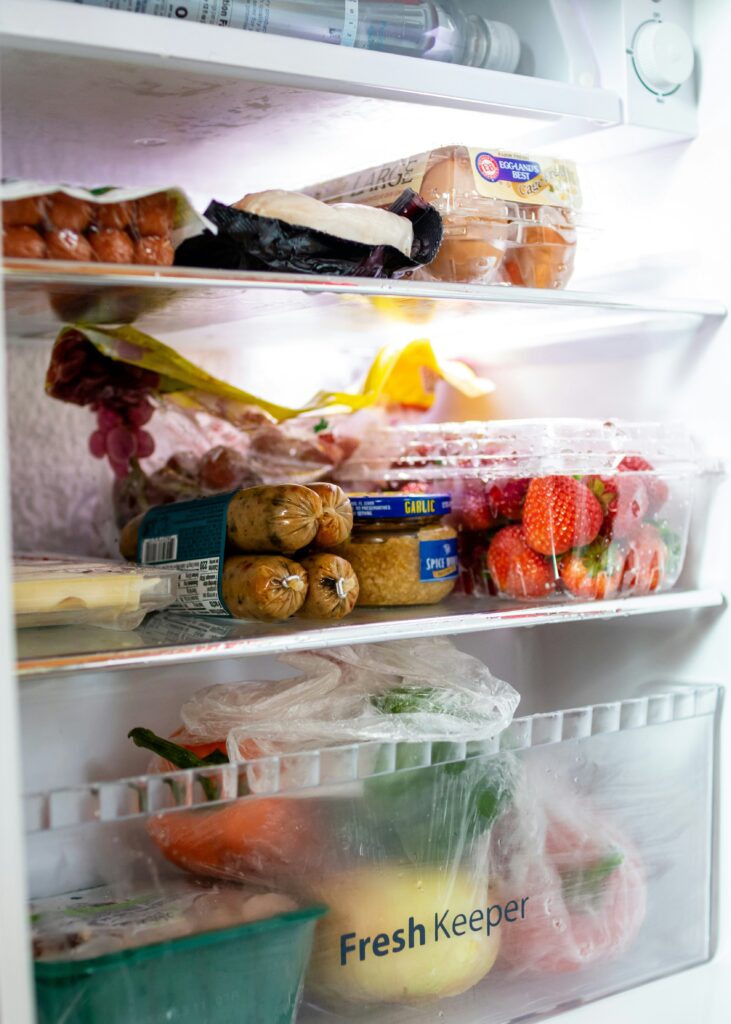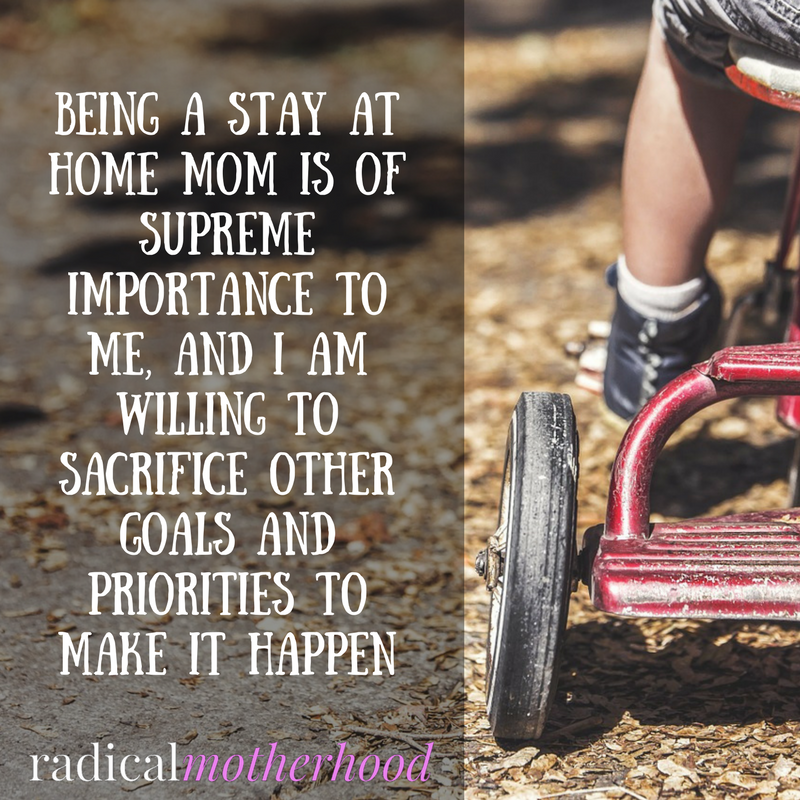
I dread meal planning. It always sounds like too much work, I never think of it until it’s too late, and I never have any creative new meal ideas. No amount of cute meal-planning templates, kid-friendly recipes, or “time saving” tips have been able to bring me around. Meal planning is right up there with balancing the checkbook and picking up dog poop on my list of terrible chores I’d rather avoid.
However, what’s even worse than trying to figure out what you’re going to eat for days or weeks at a time is finding yourself at 5 pm with no food, no plan, and a bunch of hungry kids. So, I have stripped the meal planning process down to the bare essentials. My process is simple. It’s quick. You might even call it lazy (I wouldn’t, because we’re not lazy, we’re practicing time management). Don’t get me wrong; feeding a family is hard work no matter how you do it, but this meal planning method will help you get food on the table with time, energy, and money to spare.
Breakfast and Lunch
Before we begin, let me address breakfast and lunch. It is NOT WORTH meal planning for breakfast and lunch. I’ve tried it, and I’ve never gotten past day one. Here’s what you do instead:
- Pick two breakfast foods. Cereal and toast are totally legitimate options.
- Pick two lunch meals. Sandwiches, maybe, or chicken nuggets.
- Offer these two options to your kids each day for the whole week. Or, alternate them however you see fit.
Pick foods that your kids like to eat. Breakfast and lunch are just not the right meals to battle over or to experiment with new recipes. Save that for dinnertime, when your husband is there to back you up and you’re not in as much of a hurry to get on with your day.
Step One: Decide How Far Ahead You’re Going to Plan
I once worked with a mom who planned out her dinners a month in advance. I was in awe of her. I’ve never even dreamed of planning that far ahead. My suggestion is to do one week at a time. ALSO, do not plan seven dinners. You will never, ever, eat all seven. Build in a buffer of two days for leftovers, eating out, frozen pizza, or eating cereal. There will be days when you will have to choose between cooking dinner and your own sanity, and your sanity should always win.

Step Two: Determine What’s on Hand
The next step is to determine what ingredients you already have on hand. You probably do this already, to some extent, before you go to the grocery store. Are there some vegetables about to go bad? Some meat that’s been in the freezer for months? Four bottles of barbecue sauce, because you keep forgetting that you already have it? Make a mental note (or scribble something on paper, if you must) of anything that you really want to use up.
If you’re really desperate, you can skip this step. Just go to the store and buy what you think you need. Stuff in your freezer and pantry will wait another week, and, let’s be honest, the vegetables are probably already bad.
Step Three: Think of Five Meals You Want to Make
I have a few rules about these five meals:
- Only one of them can be a brand new recipe. Most kids will just pick at something new the first time around. You’ll save yourself a lot of money and heartache if you keep the new recipes to a minimum.
- You should only plan one main dish and ONE side dish for each meal. If you must have more sides, make them super easy: fruit, salad from a bag, chips, etc.
- Nutrition is important, but if you obsess over it, you will never be able to actually prepare anything. Make it your goal to cook balanced, nourishing, flavorful food, but don’t feel like a failure if you want to make hot dogs and fries once in a while.
- On a related note, don’t make it your goal to always prepare everything from scratch. If you want to use a box, bag, mix, can, or entire frozen lasagna to save some time and effort, do it. Everything in moderation, as my (very wise) stepmom would say.
- Don’t assign each meal to a specific day (unless you have a good reason for it). The only time I put a specific meal on a specific day is if I know I’ll be gone that night, or we’ll be too busy for cooking. On those days, frozen pizza or crockpot meals can really help.
- Don’t think that you have to cook the way your mom, your friends, the Pioneer Woman, or anyone else does. Over time, you’ll develop your own favorite recipes, cooking tools, spice combinations, and so on.
Step Four: Write Down the Ingredients for Each Meal
I don’t have much to say about this step, except that if you can remember what you already have, keep that off your list. You can also use a note on your phone instead of writing your list down, if you want to get all techy.

Step Five: Go to the Store
Next, go to the store. Or, better yet, go online. I do almost all of my grocery shopping online: I search for the food, put the food in my cart, schedule a pickup time, pay, and voila – done. Well, almost. I do have to go and pick up the groceries, but if you can afford it, you could pay for delivery. Either way you shop, stick to what you need. Do not allow yourself to get distracted by the display of s’mores ingredients, or the chips that are 2 for $5, or the t-shirt one aisle over. I think it’s easier to stay on track on the website, but it’s not foolproof. Wal-Mart.com is always suggesting what it thinks I should buy, and the home page is full of things I’m easily convinced that I need.
Bonus Step: Clean out the Fridge Before You Put Stuff Away
Either before you go to the store or immediately after, throw away all of the stuff in the fridge that you’re never going to eat. Be brutal. Anything that’s possibly going to give you food poisoning needs to go. Don’t feel guilty about it…the time to feel guilty has passed. At this point, you just need to get rid of it and start over. Dig waaaaaay to the back of the fridge; any leftovers back there are definitely garbage.
Last Step: Cook
If you made it this far, you’re ready to cook your meals. Don’t be afraid to improvise if you forgot something, or your plans for the evening have changed, or you’re just too tired. This is when your frozen pizza and cereal come into play.
There! We did it. Meal planning – and making – is done.
Some Other Thoughts on Meals and Meal Planning
Picky Eaters
I often sit down to plan out meals and find that I can’t think of a single thing that my whole family will eat. And it’s true – with a large family, there are almost no meals that everyone enjoys. Have a plan for the people who will refuse to eat what you serve. That plan might be for them to go hungry; I’m totally on board with that. Or, you might offer one standard alternative for finicky eaters: a peanut butter sandwich, maybe, or Cheerios. Don’t make the alternative something that anyone really loves, or they’ll eat it every day. You could also spend some extra time analyzing your meal so that there’s at least a side dish that the person who hates the main dish can stomach.
Snacks
I am a snacker, but I very strongly dislike buying, making, and distributing snacks for my kids. If I have snacks in the house, consumption at meal time drops precipitously. I spend the whole day chasing people out of the pantry and answering the question, “Can I have a snack?” If you’re strong enough (I admit it, I’m not), don’t buy snack food. If not, limit it as much as you can. This will save you a ton of money, cut down on how much food you throw away, and prevent you from screaming, “I SAID NO MORE SNACKS UNTIL AFTER DINNER!!!” quite as often.
It’s Okay That It’s Not Fun
My last advice on meal planning is to give yourself a break if you hate it or you feel like a failure at it. You are not a bad wife, mom, or person if you don’t like planning or cooking meals. It can be easy to watch a video of a mom who’s extremely organized and excited about meal planning and get excited yourself. Then, when you try it out on your own, you find that it’s not quite as fun as it seemed. That’s okay! Feeding a family is not necessarily going to be fun, and it’s definitely not exciting. View it as a challenge to your patience and perseverance. Offer it up as a prayer (check out this post for more on that: How to Pray for Your Kids). Whatever you do, remember that your family loves you (and so does God), regardless of your skills in the kitchen.
Do you meal plan? Tell us how you handle meal planning, grocery shopping, and making meals in the comments!


